tags: Sandwalk, Down House, Darwin, nature, photography, London, England, Bromley, England, sciblog
A gate in a brick wall next to the greenhouse behind Darwin's Down House, where Darwin conducted a lot of his botany experiments.
Sunday, the day after the Nature Network Science Blog conference was over, Mike, Mo and I caught a train to Bromley, England, where we toured Darwin's Down House and Gardens and walked along the famous Sandwalk that Darwin once walked. This is part three of my photoessay series about Down House, where I focus on the Gardens and greenhouse behind the house.
The pathway leading to the greenhouse behind Darwin's Down House, where Darwin conducted a lot of his botany experiments.
After spending a fair amount of time in the flower gardens, we all set out along the well-worn pathway that formed the beginning of Darwin's famous Sandwalk. The path led us away from the flowers and towards a very large garden where food plants were cultivated, and where a greenhouse stood nearby. Darwin's gardens produced enough food to support 22 people for many years.
Darwin's gardens, which provided enough food to support 22 people.
Along the way, there was a break in the brick wall (see top image), so I stepped through it and found a grassy glade with lovely old tree in the center.
Here is a look at Darwin's Gardens through this hole in the wall before I stepped back onto the Sandwalk.
A wall next to the greenhouse behind Darwin's Down House, where Darwin conducted a lot of his botany experiments.
On the opposite side of the path from the garden was Darwin's greenhouse, which was open to the public.
Darwin filled his greenhouse with plants that he had gotten from a botanist, Joseph Hooker, as well as from a group of wealthy enthusiasts who cultivated and propagated rare plants as a hobby.
Entrance to the greenhouse behind Darwin's Down House, where Darwin conducted a lot of his botany experiments.
Here is a picture of the inside of the greenhouse, which was filled with thousands of rare and unusual plant species, all of which had, at one time or another, been kept by Darwin.
Inside Darwin's greenhouse, where he conducted numerous botanical experiments.
Immediately inside the greenhouse door was a large wooden bench covered with hundreds of individual plants comprising numerous species of carnivorous plants. These, along with orchids, are some of my most favorite plants, so I lingered quite a while over them, admiring their wide variety of shapes and colors.
Several species of carnivorous plants in Darwin's greenhouse.
Darwin was also quite fond of carnivorous plants, and sundews were a particular favorite. He was fascinated to learn that the diminutive sundew obtain all their nutrients by digesting the insects they trap rather than by taking them up from the soil through their roots like most plants. So one of Darwin's experiments involved designing a diet to keep his sundews happy: he found that these tiny carnivorous plants thrive on a diet of red meat and eggs.
An orchid in the greenhouse behind Darwin's Down House, where Darwin conducted a lot of his botany experiments.
Darwin also worked with a huge variety of orchids. He studied the strangely shaped flowers and concluded that beauty was not "designed" by God to please humans but honed by natural selection to attract specific pollinators. For example, when he saw the very long nectary of the orchid, Angraecum sesquipedale, he predicted -- correctly -- that this flower must be pollinated by a moth with a footlong tongue. This moth was later discovered.
Darwin's work with his orchids led to the book, On the various contrivances by which British and foreign orchids are fertilised by insects and the good effects of intercrossing, which was published in 1862. In fact, much of what we know about the relationships between orchids and their pollinating insects is based on Darwin's discoveries over 100 years ago.
The greenhouse behind Darwin's Down House, where Darwin conducted a lot of his botany experiments.
One last look at Darwin's greenhouse before setting off down the path to The Sandwalk.
If you enjoyed this photoessay, you might wish to read Part Two: The Flower Gardens. I plan to publish one last installment tomorrow, The Sandwalk.
- Log in to post comments


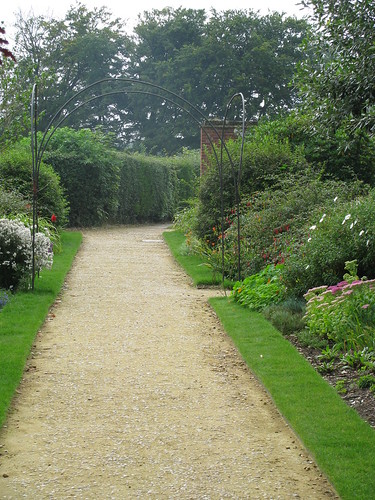
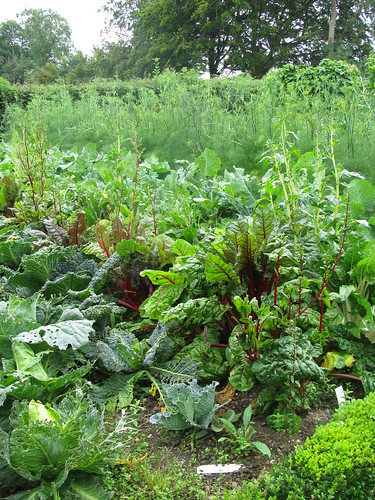

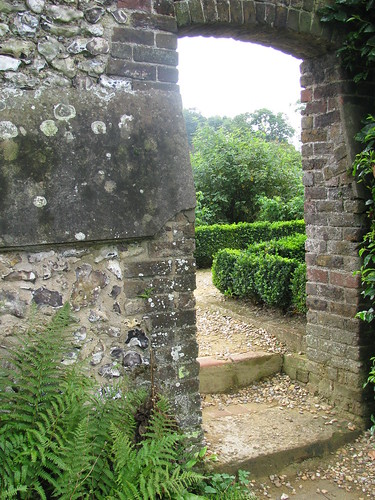
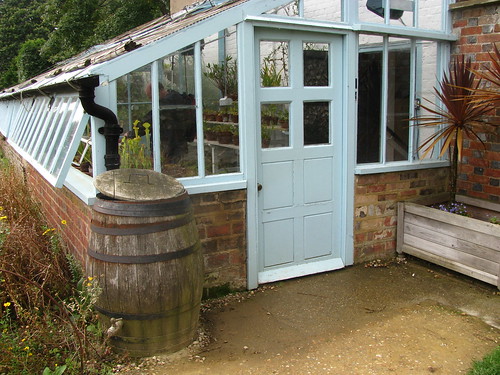

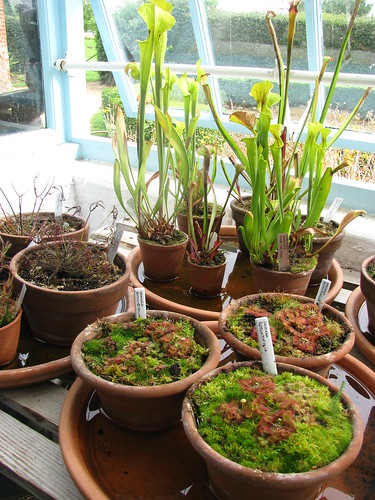

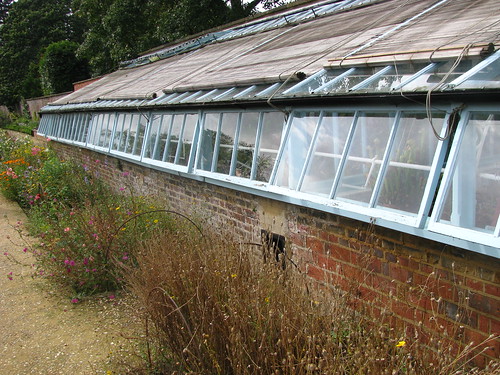
Very Nice! It was as a young horticulturalist that I first began to question creation. Then, as I starting watching plants and insects build resistance to chemicals, it lead me to more and more thought about natural selection. If an insect could build resistance to a chemical in only a few short years, certainly all life must be doing the same over millions of years?
Strange path I took, but it got me here.
Thanks so much for your series on your visit to Darwin's home. I love the photos and description! I've often wanted to visit his home, and never made it. It is nice to be able to enjoy it vicariously.
RM -- i also followed a convoluted path as i discovered evolutionary theory for myself, but wasn't it fun?
i hope you see it for yourself, heather. you will thoroughly enjoy your visit, i guarantee it.
Grrl-it has been a fun path...right through the heart of the bible belt. That isn't exactly a four lane highway.
I'm sure modern glasshouses are much more energy efficient and everything, but personally I just love those old Victorian 'lean-to' greenhouses, with their old brick, peeling paintwork, clunking great heating pipes and every available space crowded with plants. Can you feel "nostalgic" for an era that was long before your own time?
I'm very interested in those strange hanging baskets made out of interlocking wooden struts, I saw a very similar thing when I visited Kew gardens back in the summer (except theirs were hexagonal rather than square). I wonder if this is some old Victorian design for hanging baskets which is being 'rediscovered' at Kew (and used for historical authenticity at Down)?
Horwood-Those are orchid baskets. They are used primarily for orchids, bromeliads, and some ferns that need to be watered very frequently to maintain root zone moisture in very porous planting mixes.
Google wooden orchid baskets. That should provide you with many sources for the baskets.
Cheers RM.